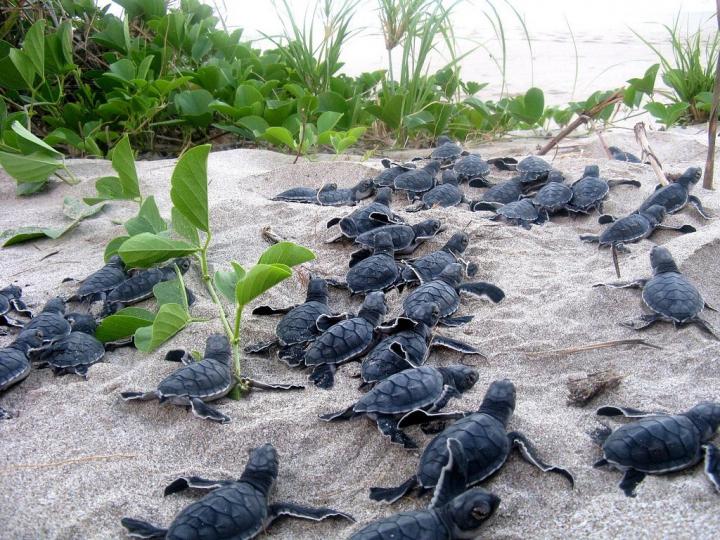San Jose, Costa Rica —(Map)
Scientists have come up with a high-tech method to help protect endangered sea turtles. Using fake eggs with GPS trackers, researchers were able to track turtle eggs that were stolen and learn the locations of people buying and selling them.
There are seven different kinds of marine (sea) turtles in the world. All of them are threatened. Several are in danger of being wiped out completely.
Sea turtles lay large groups of eggs, called “clutches”, under the sand on beaches. The eggs face many challenges, both natural and man-made. In Costa Rica, one big threat is poachers – people who take the eggs illegally in order to sell them.

(Source: Bernard DuPont [CC BY-SA], via Wikimedia Commons.)
Kim Williams-Guillén is a scientist who works for the University of Michigan and Paso Pacifico, a group that works to protect animals in Costa Rica.
After watching a couple of TV police shows, she suddenly had an idea – what if poachers could be located using a fake turtle egg with a GPS tracker inside?
Dr. Williams-Guillén presented that idea and it won a $10,000 prize. She then worked with other scientists to create the decoy (fake egg). They use a special material to 3D-print a ball about the size and shape of a squishy ping-pong ball.

(Source: Helen Pheasey.)
The scientists cut a small slit in the ball so they can put in the electronics. Basically, the inside of the egg is like a small cell phone. It has a battery, a GPS, and a way to connect to cell networks. As long as it has a cell signal, the egg can report its location once an hour.
The researchers call the finished device the “InvestEGGator”.

(Source: Otto Whitehead.)
The researchers put one InvestEGGator into 101 different turtle nests on four beaches in Costa Rica. About 25% of those nests had eggs stolen.
Not all of the decoy eggs showed results. A few were left behind, and some others simply didn’t work. But the scientists were able to track five eggs and see where they were taken. In one case the researchers were able to track an egg for 85 miles (137 kilometers).
The scientists were able to track five eggs and see where they were taken. In one case the researchers were able to track an egg for 85 miles (137 kilometers). Scientist Helen Pheasey posted this map.
😕
This image has not been loaded because of your cookie choices. To view the content, you can accept 'Non-necessary' cookies.
The results showed that most eggs were sold to local people. That wasn’t a big surprise, since in Costa Rica, turtle eggs are considered a special food. And though it’s against the law to take them from the beach, it’s not illegal to buy them.
In general, people working to solve wildlife crimes are more interested in large criminal groups than in local people having a meal. By tracking the locations where many eggs seem to be bought and sold, researchers think they may be able to help locate more important criminals.

(Source: Paso Pacifico.)
The scientists are excited about the results of the InvestEGGator. The test shows that such simple methods can work well. The researchers believe that similar ideas could be helpful in other places as well.
For example, sharks are often killed in great numbers for their fins. The scientists believe that it might be possible to slip a fake GPS-tracking fin in with many other fins to help protect threatened animals like hammerhead sharks.
😕
This map has not been loaded because of your cookie choices. To view the content, you can accept 'Non-necessary' cookies.
